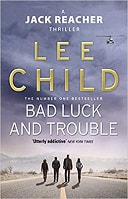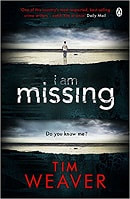|
Readers want to know what characters look like. Writers want to show them. Here are some tools that will help do it with subtlety rather than a sledgehammer.
We like to know what characters look like because it allows us to picture them in our mind’s eye. That helps us invest.
The author wants us to invest in them, immerse ourselves in their journey, because then we’re more likely to keep on reading. Still, no reader wants all that information hurled at them as if they’re reading a shopping list, and certainly not in a way that’s cliched or mundane. That’s nothing more than an information dump. Here are some ideas for how you might unveil your characters’ physical descriptions in ways that are relevant and interesting. I’ve used examples that I’ve enjoyed from published works of crime and speculative fiction. First things: Pick and choose what to tell I said above that readers like to know what characters look like. Actually, we don’t necessarily need this detail to immerse ourselves in a character’s experience. I’ve just finished reading I Am Missing by Tim Weaver. I love the David Raker series, and have read most of the books in it. I can’t recall whether and where Weaver has given me a physical description of his missing-persons investigator, but he certainly didn’t in I Am Missing. And you know what? I didn’t care a jot. Weaver uses first-person past-tense narratives, which means we uncover the mystery with Raker. We see what he saw, wonder what he wondered, run when he ran. His fear, pain, shock and relief are ours. That’s where the immersion comes, rather than in knowing that he’s X feet tall or has hair the colour of whatever. Which is to say, you might not need to tell us about the physical appearance of a character to draw us deep into the story. And even if you do want to give your readers a sense of what a character looks like, we don’t need to know everything. Tell us what’s interesting, what gives us an insight into the way they think or feel, or things they notice that will be relevant later in the story. Green eyes might be more interesting if they’re surrounded by bags that show tiredness, or creped lids that give a clue to the character’s age. Long elegant fingers might be more deserving of a mention if the owner picked away at their cuticles and made them bleed, perhaps because of anxiety. Choose the right space If you decide you want to put a character’s physical traits in front of the reader in one fell swoop, you could follow Roger Hobbs’s approach. Ghostman is a gritty, punchy thriller. Hobbs’s writing is fast and taut. Five pages into the novel (p. 8) we’re given a description of Jerome Ribbons. Hobbs fires a lot of information at us – skin, height, weight, strength. This is no shopping list, though. Ribbons is about to carry out a casino heist, and Hobbs uses a description of the character’s physical traits to show us that he’s physically and mentally capable of the crime. It’s a case of the right words in the right space.
Show us through another character’s eyes There’s no better time to show what someone looks like than when a viewpoint character sets eyes on them. We’re already in the viewpoint character’s head, thinking and seeing with them. Their observations are reliable, and it feels natural for the reader to be confronted with descriptions of what’s visible, and why it’s noticeable. Here’s another excerpt from Ghostman (pp. 31–2). Jack is the protagonist, and the viewpoint character in this chapter. We see what he saw, and know what he knew. More telling, we learn something about how this character’s appearance belies his nature.
Make your character self-reflect A viewpoint character’s self-reflection is another useful tool for character description, especially when it includes contrast … that was then, this is now. We don’t feel like we’re reading a shopping list. Instead, the details tell us a story of change – whether that is positive or negative. In The Wife Between Us (p. 11), Greer Hendricks and Sarah Pekkanen weave Vanessa’s current hair colour, height and weight into a narrative about the challenges she endured when her marriage to a wealthy hedge-fund manager broke down.
Think about what you do when you look in a mirror.
If your character is seeing themselves reflected in a window or mirror, have them notice things about themselves naturally. Create an out-of-place setting Might you set a character’s description in a scene where they look out of place? Philip K. Dick doesn’t use any clever descriptors for Bill Black in Time Out of Joint (p. 19). Instead, the interest comes from how his manner of dress, hairstyle and gait appear old-fashioned to the viewpoint character, Ragle. It’s less a case of what he looks like than why he looks strange. No matter – the reader knows what they’re looking at.
Show us the viewpoint character’s emotional reactions Describing how another character’s appearance makes the viewpoint character feel is another trick. In Bad Luck and Trouble (p. 32), Lee Child uses rather mundane adjectives to describe Neagley, but the emotional impact on the plucky and usually granite-like Reacher, and Child’s typically no-nonsense sentence structure make this description anything but dull.
In the above example, Reacher feels awkward. You might use other emotional reactions as a way to open the door to natural-sounding physical description: envy, disgust, desire, for example. Unveil through dialogue Character descriptions needn’t come solely through the narrative. Dialogue is perfect for unveiling too because it pushes the details front and centre. In I Am Missing (p. 13), Tim Weaver constructs a discussion between Raker, the protagonist investigator, and his client, Richard Kite. Weaver uses the conversation to show the scarring on Kite’s face.
Of note here is that the author chooses to give us little else about what Kite looks like – hair or eye colour, for example. It’s clever because this character is suffering from dissociative amnesia – unable to recall large chunks of information about himself. He is lost. The author keeps such tight control over the physical description that we are drawn deeper into Kite’s loss of self, and Raker’s struggle to find any clue to who he is. As I read, he remained almost faceless in my mind’s eye. All I could picture was the harm he’d suffered. Writers can and should be picky about what they choose to include, and omit, in order to draw a picture and evoke a mood. Summing up Do your best to avoid descriptions of characters that read like shopping lists or police reports. Instead, wrap the details around emotions, contrasts, and journeys of change. See you next time (said the blue-eyed fiction editor with a bob, who wore size-nine shoes and was five foot eight). Cited works and further reading
Louise Harnby is a line editor, copyeditor and proofreader who specializes in working with crime, mystery, suspense and thriller writers.
She is an Advanced Professional Member of the Chartered Institute of Editing and Proofreading (CIEP), a member of ACES, a Partner Member of The Alliance of Independent Authors (ALLi), and co-hosts The Editing Podcast. Visit her business website at Louise Harnby | Fiction Editor & Proofreader, say hello on Twitter at @LouiseHarnby, connect via Facebook and LinkedIn, and check out her books and courses.
4 Comments
Louise Harnby
11/11/2018 03:09:45 pm
Thank you so much, Robynn. Really glad it helped!
Reply
Louise Harnby
12/11/2018 10:35:16 pm
Thanks so much, Rosi!
Reply
Leave a Reply. |
BLOG ALERTSIf you'd like me to email you when a new blog post is available, sign up for blog alerts!
TESTIMONIALSDare Rogers'Louise uses her expertise to hone a story until it's razor sharp, while still allowing the author’s voice to remain dominant.'Jeff Carson'I wholeheartedly recommend her services ... Just don’t hire her when I need her.'J B Turner'Sincere thanks for a beautiful and elegant piece of work. First class.'Ayshe Gemedzhy'What makes her stand out and shine is her ability to immerse herself in your story.'Salt Publishing'A million thanks – your mark-up is perfect, as always.'CATEGORIES
All
ARCHIVES
July 2024
|
|
|
|























 RSS Feed
RSS Feed





